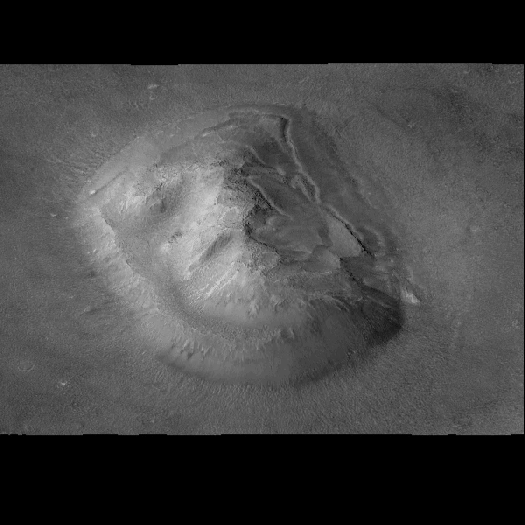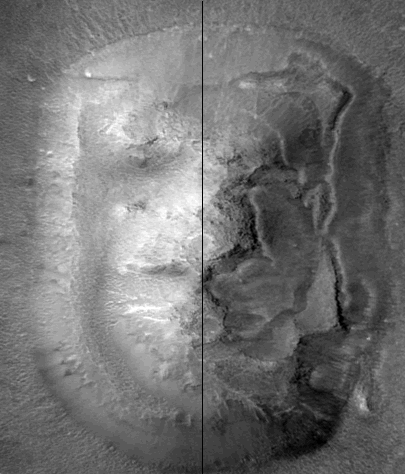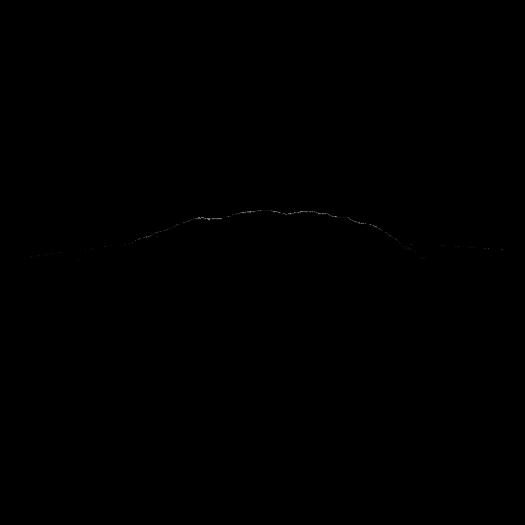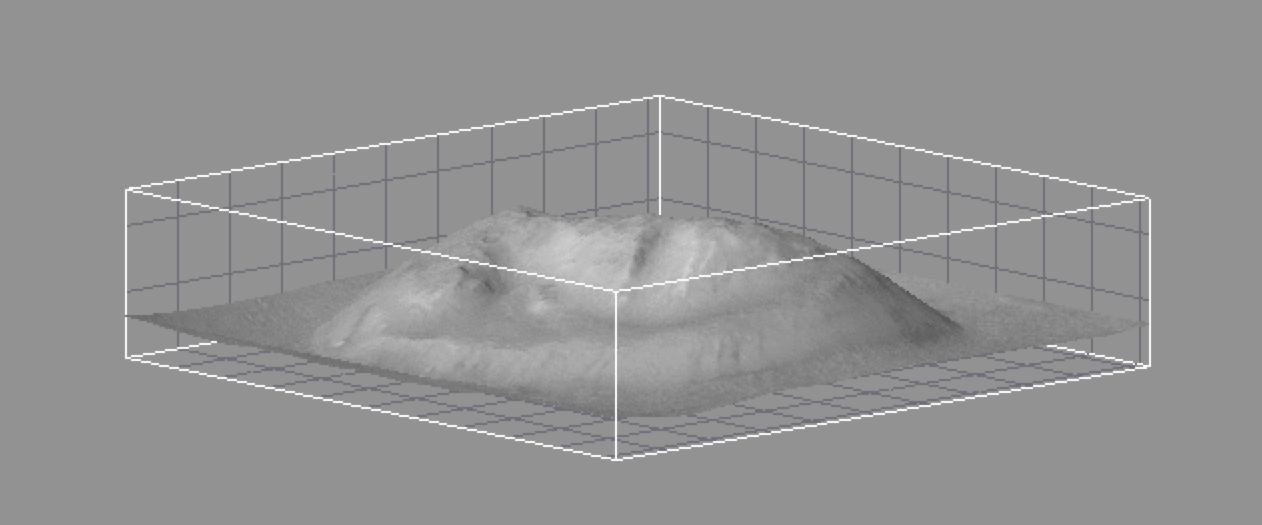This series of articles discusses three surface features that resemble faces: a strange landform in Alberta Canada known as the Badlands Guardian that was discovered in 2005, a carved stone formation found by Daniel Ruzo on the Marcahuasi Plateau in Peru in the 1950s, and the Face on Mars, a mile-long structure on the surface of Mars first imaged by a Viking orbiter spacecraft in 1976.
The Face on Mars
The Face on Mars has become a classic example of pareidolia – of seeing faces where there are none. Yet, despite NASA’s claims to the contrary, as we shall briefly summarize in this article, there is significant evidence to support the hypothesis that the Face and other nearby objects are artificial in origin and probably incredibly ancient based on their highly eroded state.

Not a Trick of Light and Shadow
When it was first imaged by a Viking orbiter more than four decades ago, NASA dismissed the Face on Mars as a trick of light and shadow. I tested this assertion using an algorithm we had developed at TASC – a tech firm north of Boston – known as “shape from shading” that computes a 3D model of the Face from the available imagery. Since only two images existed at the time, both taken under similar conditions, I used the 3D model to render synthetic images at different simulated sun angles and viewpoints. The results, which were published in the journal Applied Optics, showed that the Face maintained its facial appearance over a wide range of imaging conditions and so is not an optical illusion as claimed by NASA.
Different from Surrounding Landforms
The Face on Mars is more than a mile wide and 1-2/3 miles long. Could the Face have been constructed by modifying a pre-existing landform?
A colleague of mine at TASC had developed an algorithm to detect manmade objects in images using fractals. A fractal is a mathematical concept to describe objects in nature that are self-similar including the shape of coastlines, the structure of natural terrain, and many other kinds of phenomena. Fractal models are often used in computer graphics to generate photo-realistic renderings of natural features. Instead of using fractals to generate images his idea was to use fractals to analyze images, specifically to detect manmade objects by finding areas in images that deviate from a fractal model. When we applied his fractal algorithm to the Viking imagery the Face was found to be different from the surrounding landforms.
Is it unreasonable to conclude that this landform was different from the other landforms because it had been modified to look like a face?

Architectural Sophistication
Mars Global Surveyor and later orbiters showed that the Face is much more eroded than was previously thought. In particular, the right (eastern) side appears to have slumped (perhaps due to a process that is known as mass wasting) and is covered with dunes. As shown in Figure 2 there clear evidence of symmetry in the platform surrounding the Face, the forehead, and the eyes. There are also repeated expressions of symmetry and the geometry of 3-4-5 right triangles in its shape and internal features.
Artificial Structure or Pareidolia?
We close with a rendering of the Face as seen from the southwest. It is a time-lapse view over the course of a summer day on Mars. Like those enigmatic features on the Marcahuasi plateau discussed in the previous post, if the Face on Mars is an optical illusion, nature is having a great joke on us.





One Reply to “”